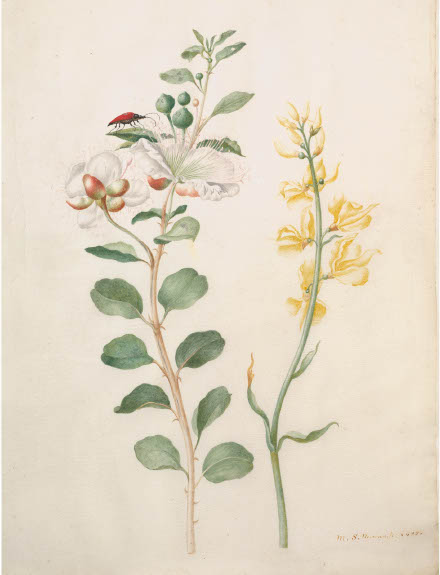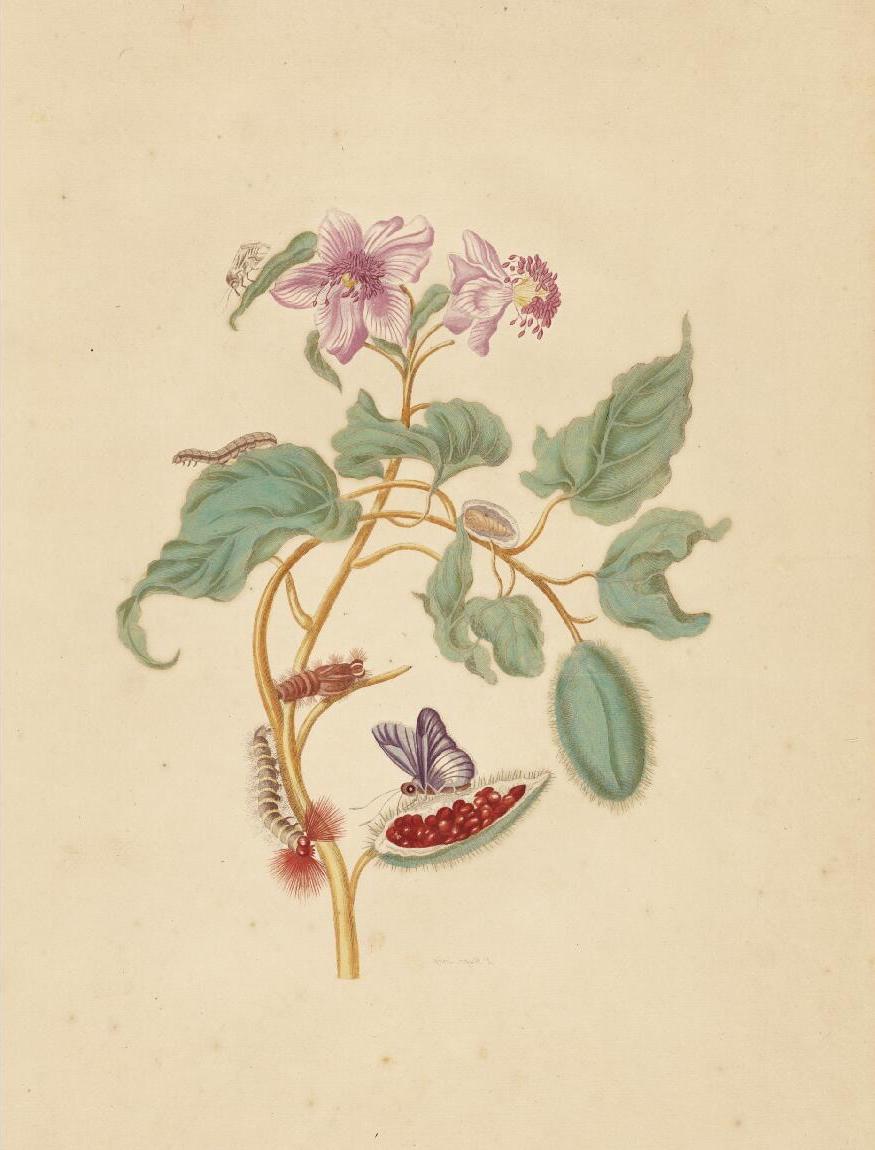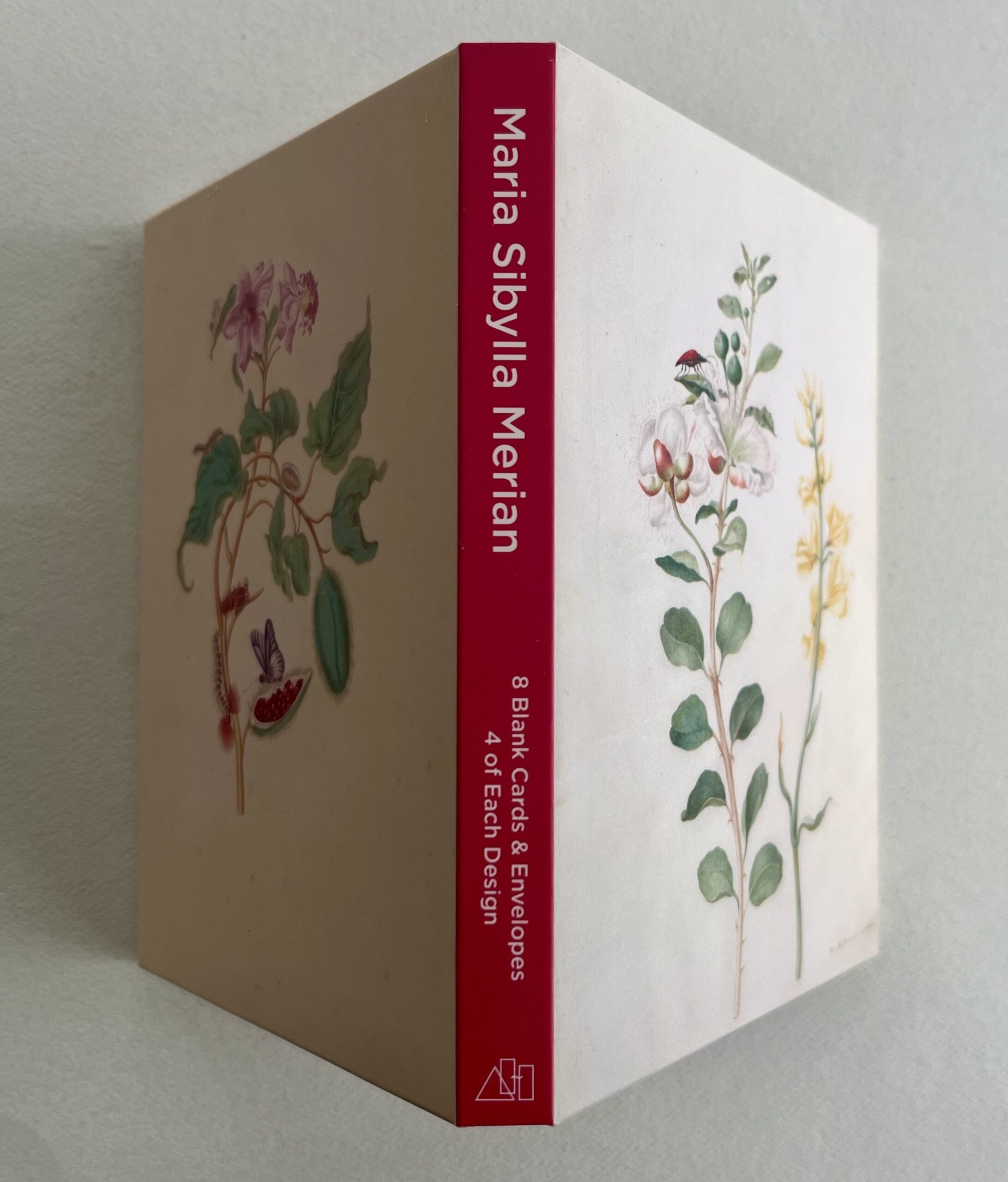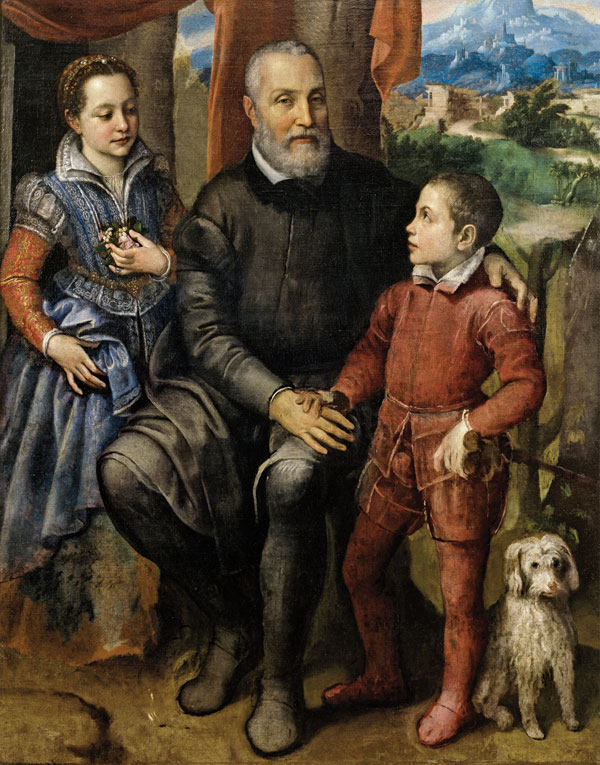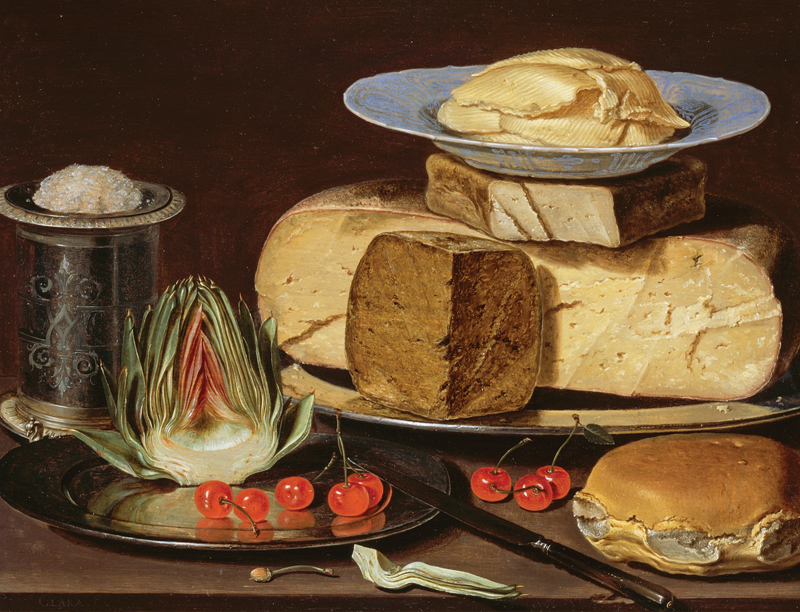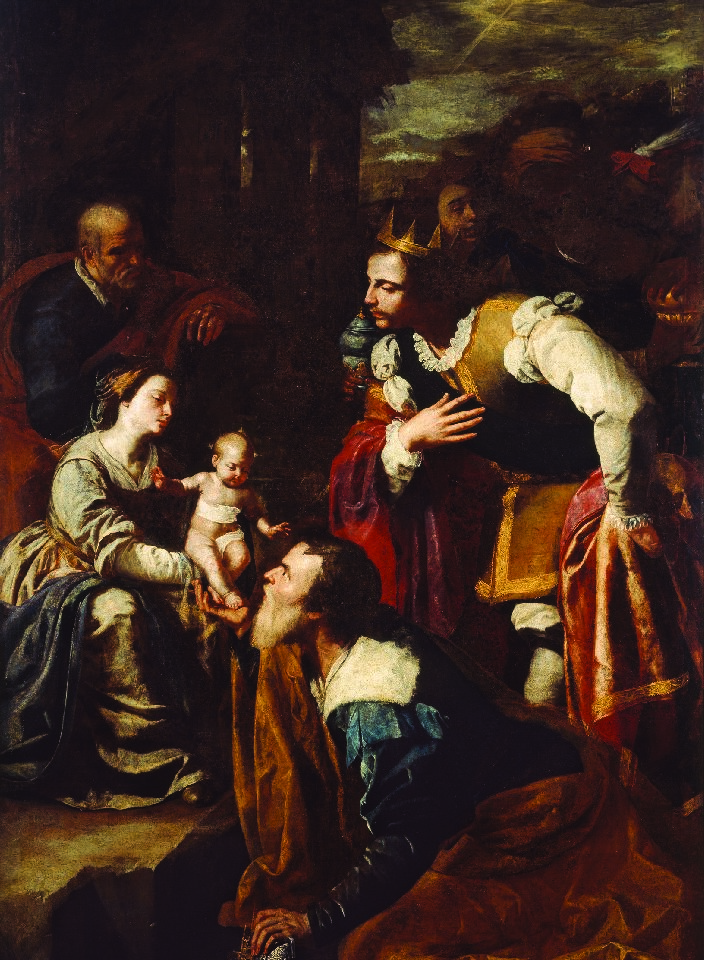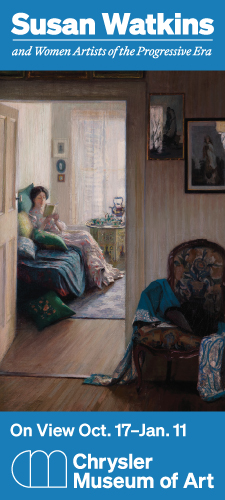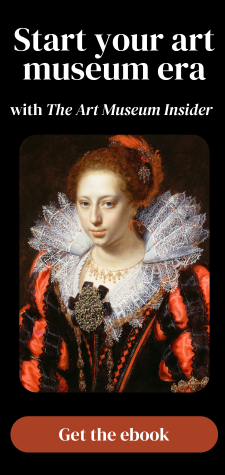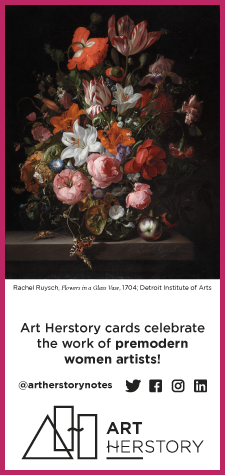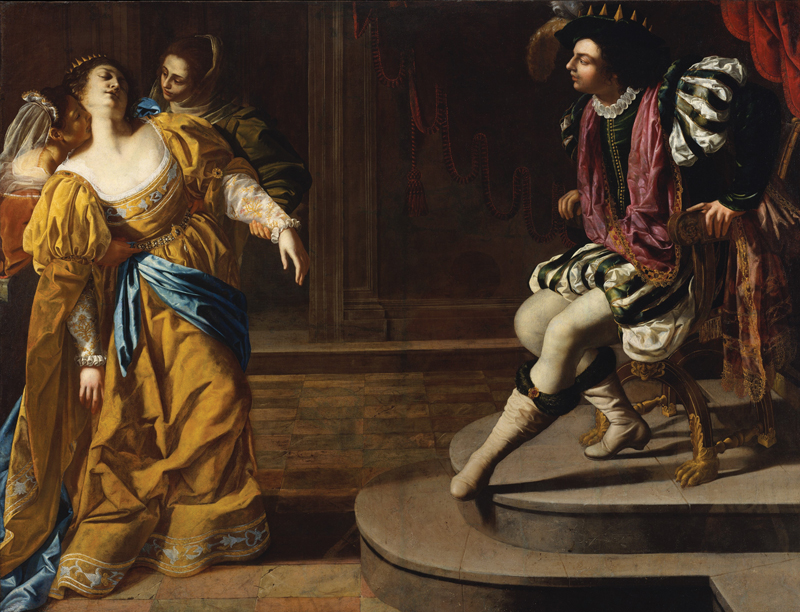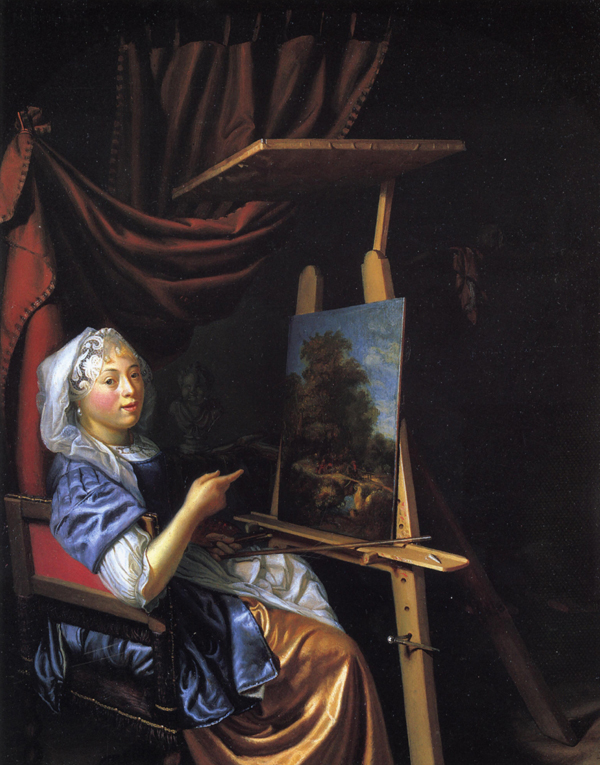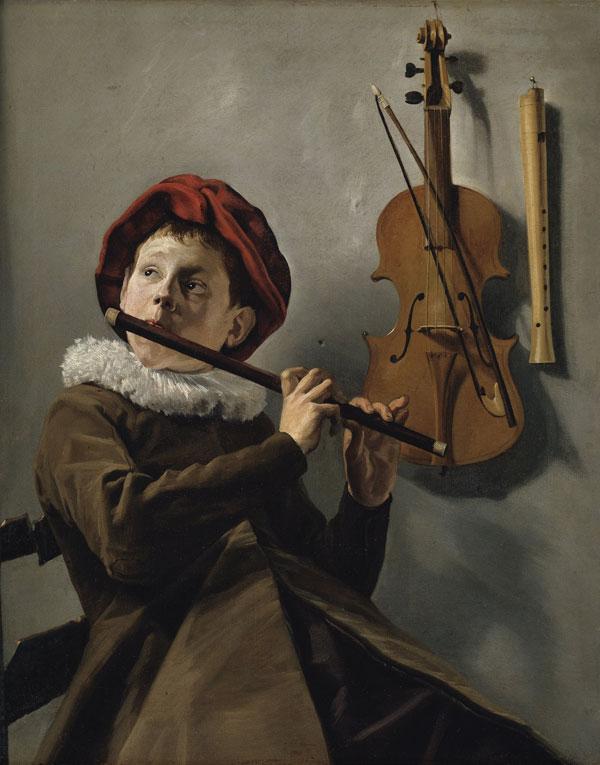Maria Sibylla Merian
- Maria Sibylla Merian (German, 1647–1717)
- Watercolor, white gouache, on vellum, 14 x 10 5/16 in. (35.5 x 26.2 cm)
- 1693
- The Metropolitan Museum of Art
-
- Maria Sibylla Merian (German, 1647–1717)
- Gouache, 52.7 × 34.8 cm (20 3/4 × 13 11/16 in.)
- 1730/71 (Counterproof)
- The J. Paul Getty Museum, Los Angeles (Digital image courtesy of the Getty’s Open Content Program)
The Artist
German-born naturalist and scientific illustrator Maria Sibylla Merian (1647–1717) was one of the early European naturalists to observe insects directly. Because of her careful observations and documentation of the metamorphosis of the butterfly, Merian is considered to be among the most significant contributors to the field of entomology.
Over the course of her life, Merian observed and illustrated the life-cycles of many species of insects, which she bred herself. She published four books, which included her own illustrations, as well as her scientific research on the process of metamorphosis and the plant hosts of nearly 200 European insect species. As Dr. Kay Etheridge points out in her Art Herstory guest post, Merian’s images “were the first to portray insect metamorphic cycles and behaviors centered around the plant species that nourished the caterpillars.”
At age 52, she traveled—accompanied by her 21-year-old daughter Dorothea—to Surinam (Dutch Guiana). For two years, she studied the indigenous flora and fauna in their tropical habitat. During her time in South America, as a member of the class that governed the colony, she participated as an enslaver of black and indigenous people. The women she enslaved provided Merian with valuable information about the medicinal properties of plants she studied (including their use for abortion and infanticide). Upon her return to Amsterdam, she published the lavishly illustrated book Metamorphosis insectorum Surinamensium, depicting the life cycles of the region’s insects.
Merian’s daughters, Johanna Helena Herolt (1668–1723) and Dorothea Maria Graff Gsell (1678–1743), were also talented artists whose work focused on natural history.
As of December 2019, a painting by this artist—Pomegranate and Menelaus Blue Morpho Butterfly, 1702–03—is included in the CODART Canon as one of 100 Dutch/Flemish masterpieces (as voted on by CODART curator-members).
Current and past exhibitions featuring Maria Sibylla Merian:
A Feast of Fruit and Flowers at the Hyde Collection, October 25, 2025–March 8, 2026.
Women Artists from Antwerp to Amsterdam, 1600–1750 at the National Museum of Women in the Arts, September 26, 2025–January 11, 2026.
Making Her Mark: A History of Women Artists in Europe, 1400–1800 at the Art Gallery of Ontario from March 30–July 1, 2024. The show was on previously (October 1, 2023–January 7, 2024) at the Baltimore Museum of Art.
Maestras: Women Artists at Arp Museum from February 25–June 16, 2024. The exhibition was previously hosted (October 31, 2023–February 4, 2024) at Museo Nacional Thyssen-Bornemisza in Madrid.
In 2017, in recognition of the 300th anniversary of her death, there were many Merian exhibitions around Europe. There were shows in Wiesbaden, Holyrood, Amsterdam, Frankfurt, and Berlin, at least. The first major exhibition of her work in America took place in 2008, at the Getty Institute in Los Angeles.
Books about Maria Sibylla Merian
Nonfiction
Maria Sibylla Merian, by Catherine Powell-Warren (Lund Humphries, 2025).
Maria Sibylla Merian: Changing the Nature of Art and Science, by Marieke van Delft, Kay Etheridge, Hans Mulder, Bert van de Roemer, and Florence Pieters (2022)
The Flowering of Ecology: Maria Sibylla Merian’s Caterpillar Book, by Kay Etheridge (2020)
Maria Sibylla Merian, by Daniel Kiecol (2019)
Maria Merian’s Butterflies, by Kate Heard (2016)
A Butterfly Journey: Maria Sibylla Merian. Artist and Scientist, by Boris Friedewald (2015)
Insects and Flowers: The Art of Maria Sibylla Merian, by Stephanie Schrader and David Brafman (2008)
Maria Sibylla Merian and Daughters: Women of Art and Science, by Ella Reitsma (2008)
Chrysalis: Maria Sibylla Merian and the Secrets of Metamorphosis, by Kim Todd (2007)
For young readers
Maria Sibylla Merian: Artist, Scientist, Adventurer, by Sarah B. Pomeroy and Jeyaraney Kathirithamby (2018)
Summer Birds: The Butterflies of Maria Merian, by Margarita Engle (2018)
The Girl Who Drew Butterflies: How Maria Merian’s Art Changed Science, by Joyce Sidman (2010)
Coloring books
Maria Merian’s Butterflies Coloring Book: Drawings from the Royal Collection (2021)
Maria Merian’s Butterflies Colouring Book (2017)
Read more online about Maria Sibylla Merian:
The Art Herstory blog:
Maria Sibylla Merian is in Smithsonian Shops!
Maria Sibylla Merian’s Artistic Entomology, by Dr. Kay Etheridge
The Protofeminist Insects of Giovanna Garzoni and Maria Sibylla Merian, by Professor Emma Steinkraus
Merianin (a website in German and English): Explore >
A Space of Their Own: Explore >
The Maria Sibylla Merian Society: Explore >
Botanical Art and Artists: Explore >
The New York Times: Explore >
The Guardian: Explore >
The Atlantic: Explore >
The New York Review: Explore >
National Museum of Women in the Arts: Explore >
Natural History Museum, London: Explore >
Royal Collection Trust: Explore >
Lady Science: Explore >
History of Scientific Women: Explore >
Women and the American Story: Explore >
The Conversation.com: Explore >

